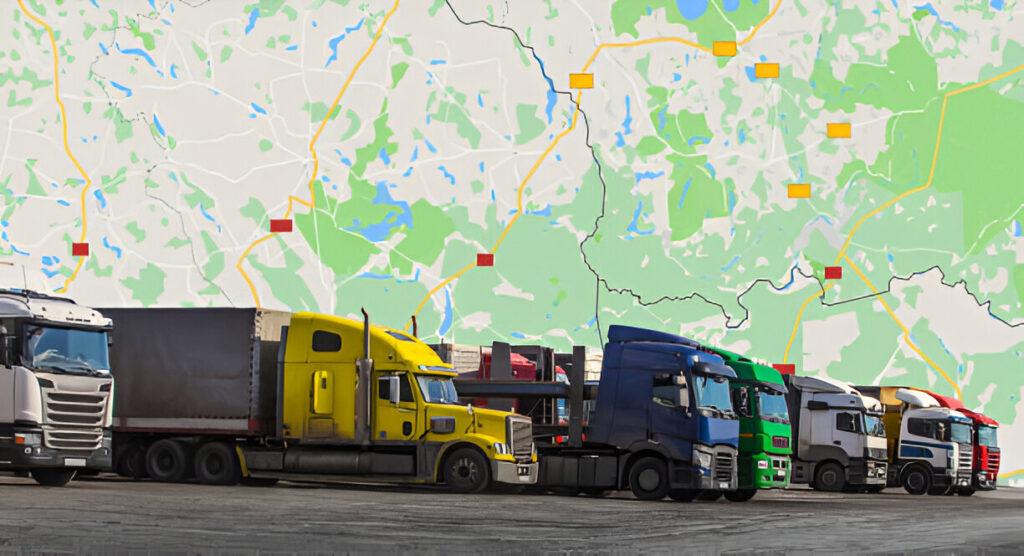Key Takeaways:
- Trucking regulations vary significantly between interstate and intrastate operations.
- Understanding the complexities of these rules can assist with compliance and operational optimization.
- Truckers can avoid legal issues and streamline their business processes with the right information.
Table of Contents:
- Introduction to Trucking Regulations
- Understanding Interstate vs. Intrastate Trucking
- Key Regulatory Bodies and Their Roles
- Compliance and Safety Standards
- Impact of Regulations on Trucking Operations
- Common Challenges and Solutions
- Tips for Staying Compliant
- Future Trends in Trucking Regulations
Trucking is the backbone of commerce, ensuring that goods reach their destinations across varying landscapes and distances. In this arena, understanding interstate versus intrastate regulations becomes paramount. These rules aren’t just bureaucratic red tape—they form the truth that maintains safety and equity on the road. Depending on whether a trucker’s route crosses state lines or stays within them, distinct sets of rules may apply, each with its implications for logistical planning and operational cost.
Adherence to these regulatory frameworks is non-negotiable; non-compliance can lead to significant penalties, operational setbacks, and even suspension from service. Our goal with this guide is to demystify these intricate rules, assisting truckers in staying gainfully compliant while optimizing their workflows to maximize efficiency and minimize costs.
Introduction to Trucking Regulations
Trucking regulations are integral to the economic and safety landscapes of the transportation industry. They resemble the unseen force ensuring that the wheels of commerce turn without friction or interruption. At their essence, these regulations ensure the safety of both cargo and driver, establish fair market practices and stabilize a highly dynamic transportation ecosystem. Understanding these rules isn’t just beneficial, as it’s essential for anyone in the trucking business. By being well-versed in current regulations, operators can prevent legal tussles, avoid penalties, and effectively contribute to the safe, fair, and efficient movement of goods.
Understanding Interstate vs. Intrastate Trucking
The distinction between interstate and intrastate trucking lies primarily in the geographical scope of operations. Interstate trucking refers to any trucking operation that crosses state or national borders. It involves the movement of goods from one state to another or internationally. Meanwhile, intrastate trucking encompasses operations within a single state’s boundaries. For instance, if a truck loads up with products in Los Angeles and delivers them to San Francisco, it’s considered an intrastate trip. Conversely, if a shipment originates in Miami and ends in Atlanta, it qualifies as interstate trucking.
Different regulations govern each type of operation. Interstate trucking must comply with federal United States Department of Transportation (DOT) regulations, while intrastate trucking is typically subject to the rules set forth by the individual state.
Key Regulatory Bodies and Their Roles
Navigating trucking regulations requires a thorough understanding of the different authorities involved. The Federal Motor Carrier Safety Administration (FMCSA) is crucial in overseeing and regulating interstate trucking. This body enforces safety protocols, sets compliance standards, and regulates commercial road transport across state lines. FMCSA’s purview includes driver qualifications, service hours, vehicle maintenance, and more.
Intrastate trucking, however, often falls under the jurisdiction of state transportation or motor vehicle departments. These departments regularly update rules and inform truckers about legislative changes. Staying informed on federal and state regulations is crucial to successful operations in either realm.
Compliance and Safety Standards
Safety is the cornerstone of all trucking regulations, aiming to minimize risks for truckers, other road users, and cargo. Compliance involves various standards: vehicle maintenance protocols, driver rest periods, load limits, and hazardous materials handling, to name a few. Notably, the Hours of Service (HOS) regulations limit drivers’ time behind the wheel, preventing fatigue-related incidents.
These standards protect lives and enhance operational efficiency by reducing accident-related downtimes and maintenance issues. Non-compliance can result in steep fines, license loss, and increased insurance premiums, making adherence a legal obligation and an economic necessity.
Impact of Regulations on Trucking Operations
Regulations deeply influence trucking operations and their bottom lines. For example, changes to HOS rules may necessitate adjustments to delivery schedules, impacting earnings and customer relationships. Additionally, certain safety standards could require investments in new technologies or procedures, increasing operational costs. Yet, many trucking companies find that safety, efficiency, and reliability gains offset these costs.
For instance, introducing electronic logging devices (ELDs) to record driver hours has improved compliance adherence, streamlined administrative processes, and enhanced operational transparency.
Common Challenges and Solutions
Truckers often face challenges arising from regulatory requirements, including a significant administrative burden and the complexity of navigating multiple laws. Adopting technology solutions can greatly alleviate these pressures. Digital tools and platforms simplify record-keeping, automate compliance checks, and facilitate easy access to regulatory updates.
Embracing technology and continuously updating oneself with legislative changes are key to overcoming these hurdles. This article discusses new trends in trucking regulations and provides an insightful look at the emerging trends that influence regulations.
Tips for Staying Compliant
- Regularly update your knowledge of both federal and state regulations to ensure compliance.
- Leverage innovative technology solutions like fleet management software to track and manage compliance effortlessly.
- Integrate routine training and educational sessions for drivers and staff to reinforce the importance and methods of compliance.
Future Trends in Trucking Regulations
The trucking industry’s regulatory landscape is set to evolve with technological advancements and socio-environmental concerns. Vehicle automation may revolutionize how compliance is monitored and enforced. Similarly, eco-friendly trucks and alternative fuel mandates will likely become more prominent, aligning the industry with global sustainability goals.
Staying informed about these evolving trends is not just about maintaining compliance but about securing a competitive edge in a quickly modernizing industry. Adopting newer technologies and sustainable practices will ensure regulatory compliance and foster resilience and adaptability.


